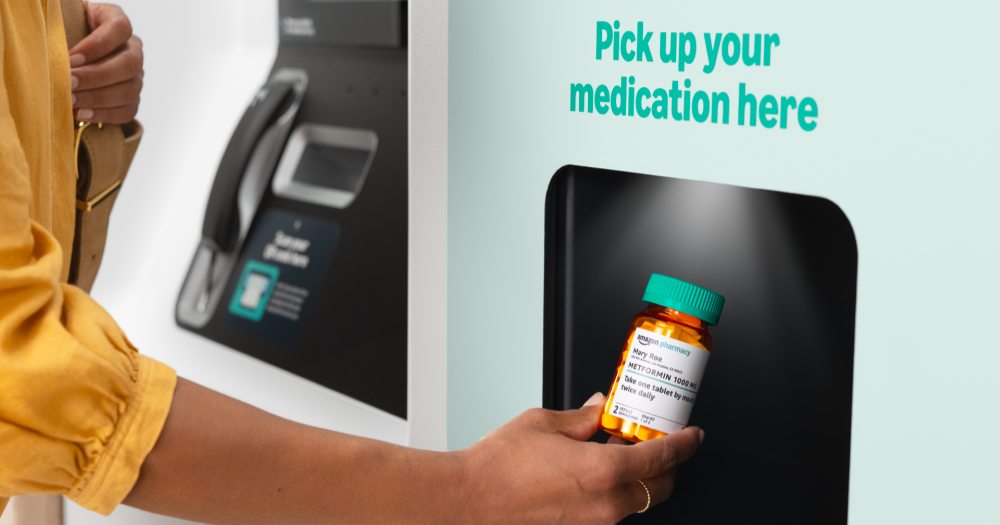Amazon Pharmacy unveils vending machines for prescription drugs

Amazon's latest play in healthcare is a bold one. The company is rolling out Amazon Pharmacy Kiosks — automated medication stations tucked inside One Medical offices — so patients can grab their prescriptions moments after a doctor visit. Think of it as the pharmacy without the detour. For anyone who's ever left a clinic with a paper script and good intentions but never made it to the drugstore, this move could be a game-changer.
As Hannah McClellan, Amazon Pharmacy's VP of Operations, put it, "When patients have to make an extra trip to the pharmacy after seeing their doctor, many prescriptions never get filled." Amazon's answer? Bring the pharmacy right to the point of care.
How does it work?
Each kiosk is like a miniature, tech-powered dispensary built on Amazon's logistics backbone. Stocked with medications tailored to local prescribing patterns, it's designed for speed and simplicity. Here's the drill:
- Patients set up an Amazon Pharmacy account online.
- During a visit to a participating One Medical office, the provider sends the prescription directly to Amazon Pharmacy.
- In the Amazon app, patients choose kiosk pickup and pay.
- They get a QR code to scan at the kiosk.
- Within minutes, a pharmacist has reviewed the medication and it's ready for pickup.
No lines, no detours, no waiting. The entire experience happens under Amazon's digital roof — complete with upfront cost transparency, discount options, and the ability to video chat with a licensed pharmacist if questions arise. McClellan emphasized that the setup was designed to be "simple, fast, and patient-centered," ensuring patients still get professional guidance even in this high-tech format.
Why does it matter?
The stakes are high. In the U.S., one-third of prescriptions go unfilled, and half of medications for chronic illnesses aren't taken as prescribed. That's not just a statistic — it's billions lost and lives compromised. Amazon's new model aims to plug that gap by cutting out friction between diagnosis and treatment.
For many, that extra trip to the pharmacy can mean the difference between getting better and staying sick. Dr. Andrew Diamond, Chief Medical Officer at One Medical, explained it bluntly: "The ability to know a patient is leaving our office with their medication in hand — especially for conditions requiring immediate treatment like infections — can make a meaningful difference in their care journey."
There's also an accessibility angle. Roughly one in four U.S. neighborhoods are considered pharmacy deserts, leaving millions without easy access to essential drugs. These kiosks could shrink that divide — starting with Los Angeles, where the first batch will appear in December 2025, from Downtown L.A. to Beverly Hills and beyond.
The context
Amazon's been quietly building its healthcare empire for years, brick by digital brick. Between Amazon Pharmacy, One Medical, and Amazon Clinic, the tech giant's goal is clear: weave healthcare into its e-commerce fabric. With the kiosk rollout, Amazon isn't just dipping its toes in — it's closing the loop from diagnosis to doorstep (or in this case, doctor's office).
The move signals a deeper ambition to simplify and personalize how Americans access care. Amazon isn't replacing doctors or pharmacists — it's streamlining the messy middle. As McClellan framed it, this is about "removing a critical barrier and helping patients start their treatment when it matters most — right away."
In a country where getting a prescription filled can still feel like running an errand from the 1990s, Amazon's new kiosks may just represent the future — one pill bottle and QR code at a time.
💡Did you know?
You can take your DHArab experience to the next level with our Premium Membership.👉 Click here to learn more
🛠️Featured tool
 Easy-Peasy
Easy-Peasy
An all-in-one AI tool offering the ability to build no-code AI Bots, create articles & social media posts, convert text into natural speech in 40+ languages, create and edit images, generate videos, and more.
👉 Click here to learn more


